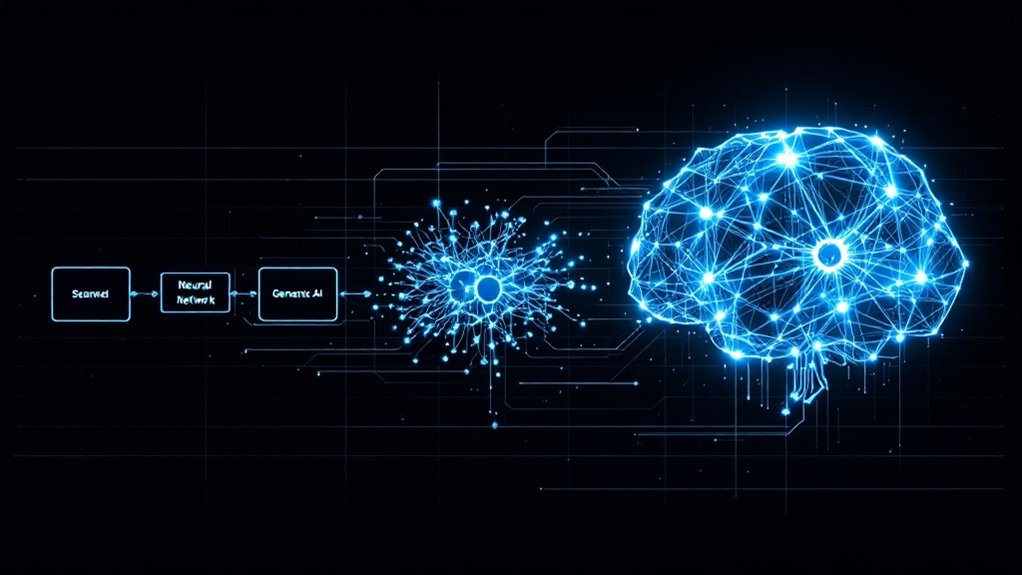AI chatbots have come a long way from those rigid, rule-based “Press 1 for English” robots. Early models simply matched keywords to canned responses—zero creativity, all bureaucracy. Now, thanks to natural language processing and spicy upgrades like transformers, bots actually get context. They use machine learning for memory and even zero-shot learning, so they can handle new, weird questions, like arguing which Batman actor was best. Stick around and you’ll see just how deep this rabbit hole goes.
At their core, AI chatbots are simply algorithms designed to simulate conversation. You type or speak, they process, and—voilà!—an answer appears. Some bots are old-school, sticking to strict scripts and only responding if you say the secret password (think: “Order status”).
Others, fueled by machine learning, can handle everything from basic FAQs to deciphering why your pizza hasn’t shown up yet, all while pretending they care.
Here’s where the tech wizardry comes in:
- NLP deciphers your intent. It’s less about matching keywords and more about context. So, if you say, “I can’t log in,” the bot doesn’t just focus on “log”—it gets that you’re locked out.
- Machine learning and deep learning let bots learn from every chat, gradually improving over time. They’re like that friend who never forgets anything—except less annoying.
- Transformers and attention mechanisms (not the Michael Bay kind, sorry) help chatbots consider every word in your message and its relationship to the others.
Some bots stick to the basics with rule-based scripts. But the big shots? They use generative AI, which means they can handle new, never-before-seen questions using zero-shot learning. Many modern chatbots rely on advanced techniques like natural language understanding (NLU) to interpret open-ended input and deliver more accurate responses.]
The workflow is simple: you ask, it processes, it searches its brain (or database), and spits out a response. Each back-and-forth is a mini-lesson for the bot, making it a little sharper for the next user.









